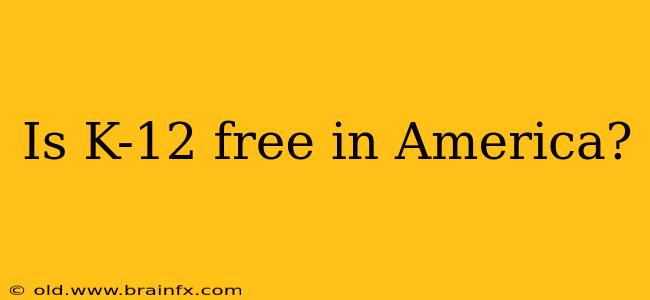The short answer to the question, "Is K-12 education free in America?" is: mostly, yes, but with significant caveats. While public K-12 education is largely tuition-free, the reality is far more nuanced and involves hidden costs, varying state policies, and inequalities in access to resources.
The Illusion of "Free" Public Education
The foundational principle of American education is that K-12 schooling is a public right, funded primarily through taxes. This means families generally don't pay a direct tuition fee to attend public schools. However, this "free" education often overlooks considerable indirect expenses that can create significant financial barriers for many families.
Hidden Costs of "Free" Public Education
These hidden costs include:
- School supplies and materials: Textbooks, notebooks, pencils, art supplies, and other essential materials are not typically provided, placing a burden on families, especially low-income households. The cost of these supplies can add up considerably throughout the school year.
- Extracurricular activities: Participation in sports, clubs, and other extracurricular activities often involves fees for uniforms, equipment, travel, and participation. These costs can prevent children from low-income families from participating in enriching experiences.
- Transportation: Transportation to and from school can be a significant expense, especially for families without access to reliable public transportation or those living in areas with inadequate school bus services.
- Technology costs: The increasing reliance on technology in education means families may need to purchase laptops, tablets, or internet access to support their child's learning, creating a digital divide that impacts learning outcomes.
- Educational support services: Tutoring, test preparation, and other supplemental educational services are often not covered, forcing families to shoulder these extra costs to help their children succeed.
Variations Across States and Districts
The level of funding for public schools varies significantly between states and even within districts within a state. This disparity in funding directly impacts the quality of education and resources available to students. Wealthier districts often have more funding, leading to better facilities, smaller class sizes, and more access to specialized programs. Poorer districts often struggle to provide adequate resources, impacting student outcomes.
Private School Options: A Different Landscape
Private K-12 schools are not free. They charge substantial tuition fees, making them accessible only to families with significant financial resources. These schools often offer different educational approaches, specialized programs, or smaller class sizes but are a significant financial commitment.
Conclusion: A System in Need of Reform
While public K-12 education in America is technically tuition-free, the significant hidden costs and funding disparities create a system far from equitable. Many families face substantial financial burdens to ensure their children receive a quality education, perpetuating inequalities in access and achievement. Understanding the complexities beyond the "free" label is crucial to advocating for fair and equitable funding for all students, ensuring equal opportunities for every child to succeed.

